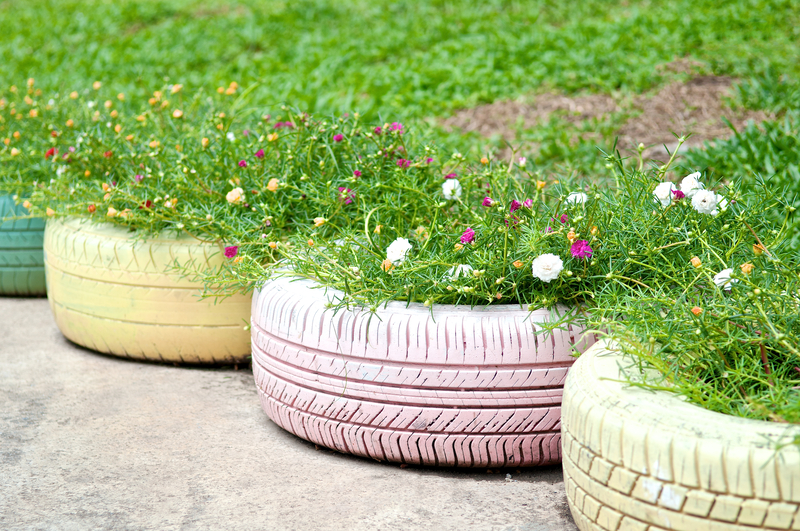Old Tiles in Outdoor Spaces
Posted on 16/04/2025
Outdoor spaces serve as an extension of our homes, offering a place to relax, entertain, and enjoy the natural surroundings. Among the myriad choices available for outdoor flooring, old tiles have emerged as a popular and stylish option. Not only do they offer a timeless aesthetic appeal, but they are often more durable and cost-effective. This article delves into the various aspects of using old tiles in outdoor spaces, covering their benefits, drawbacks, and offering practical tips.
Aesthetic Appeal of Old Tiles
Old tiles offer a unique aesthetic that combines vintage charm with rustic elegance. Their weathered appearance lends character to outdoor spaces, rendering them warm and inviting. Unlike modern tiles that sometimes lack individuality, old tiles often come with distinctive patterns and textures which can transform any outdoor area. Whether it's a patio, garden pathway, or poolside deck, old tiles can create a visually captivating environment that stands the test of time.

Durability and Strength
One of the standout benefits of using old tiles in outdoor spaces is their durability. Historically, tiles were crafted with high-quality materials and subjected to rigorous processes to ensure longevity. These tiles are often made from natural stone, terracotta, or high-fired ceramics, which can withstand extreme weather conditions. The wear and tear they've already experienced can testify to their endurance, making them a reliable choice for busy outdoor areas.
Cost-Effectiveness
In many cases, old tiles can be a budget-friendly alternative to new ones. Salvaged or reclaimed tiles can often be acquired at a fraction of the cost of new, high-end tiles. Additionally, using reclaimed materials contributes to sustainability, reducing the demand for new resources and minimizing waste.
Practical Tips for Using Old Tiles in Outdoor Spaces
1. Inspect for Integrity: Ensure that the old tiles are in good condition. Check for cracks, chips, or significant wear that could affect their durability.
2. Pattern and Design: Plan the layout before installation. The unique patterns and colors of old tiles can be used to create intricate designs or mosaic styles.
3. Proper Sealing: Old tiles generally benefit from a good sealing to protect against moisture penetration, especially if they are porous.
4. Underlayment: A strong underlayment is critical for maintaining the stability of old tiles. Make sure the base is even and prepared to support the tiles adequately.
5. Routine Maintenance: While durable, old tiles may require routine upkeep like cleaning and occasional resealing to maintain their appearance.
Pros and Cons of Using Old Tiles in Outdoor Spaces
Pros:
- Aesthetic Appeal: Offers a unique, stylish look that modern tiles often can't replicate.
- Durability: High-quality, long-lasting materials.
- Cost-effective: Often cheaper than new tiles.
- Sustainability: Environmentally friendly as they involve the reuse of materials.
Cons:
- Availability: Finding a sufficient quantity of old tiles in good condition can be challenging.
- Variety in Size: Variations in size can make installation more complex.
- Maintenance: May require more upkeep than new tiles in some cases.

Takeaways
- Old tiles can add an unmatched aesthetic appeal and durability to outdoor spaces.
- Proper inspection, preparation, and maintenance are crucial for long-term satisfaction.
- Despite potential challenges like availability and variety, their cost-effectiveness and sustainability make them a worthy choice.
Conclusion
Incorporating old tiles into outdoor spaces is an excellent way to blend durability, beauty, and sustainability. While there are certain drawbacks, the pros significantly outweigh the cons, particularly when considering the unique aesthetic charm and the cost benefits. With thorough planning and routine maintenance, these tiles can revitalize any outdoor area, offering a timeless and environmentally friendly flooring solution.




